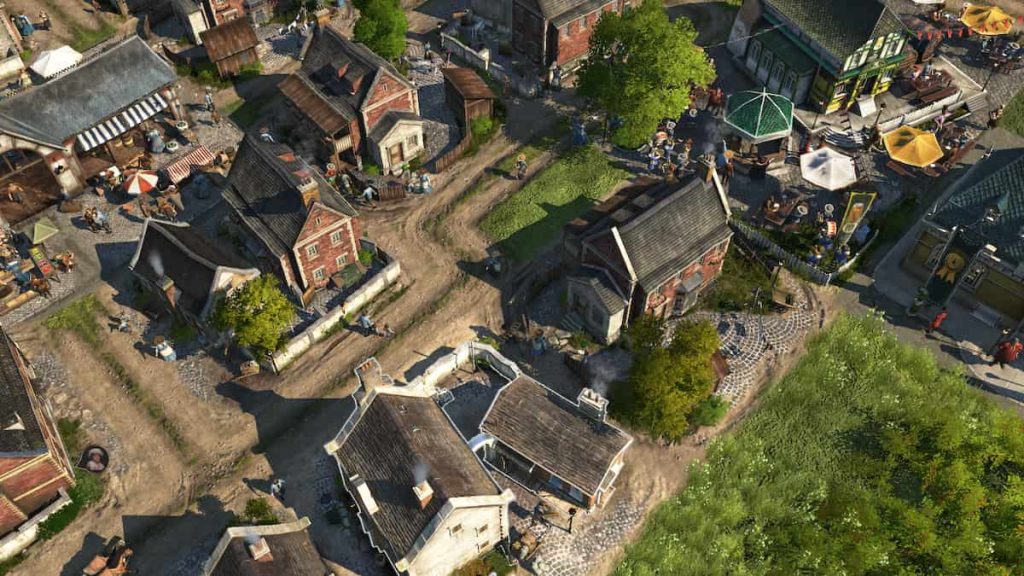The Backbone of Your Economy: Workers in Anno 1800
In the game Anno 1800, workers are the lifeblood of your growing civilization. As you progress through the game and unlock new ages, such as the Industrial Revolution, the importance of a robust workforce becomes increasingly evident. Workers are essential for building new structures and advancing to the next stage. They handle the production of essential goods, ensuring your economy remains strong and vibrant. Without a large and efficient workforce, your city’s development can grind to a halt.
Upgrading Your Farmer’s Residences
To increase your workforce and unlock more advanced production capabilities, you need to upgrade your Farmer’s residences to Worker’s houses. This process involves meeting three main requirements: access to a nearby Marketplace, a steady supply of Fish, and the provision of proper work clothes. The Marketplace is where your residents will purchase goods and fulfill their needs, so it’s crucial to ensure that each Farmer’s residence is well-connected by roads. The Fishery building should be placed close to where Fish is abundant, and the Framework Knitters should be nearby to supply the necessary clothing. Once these requirements are met, the residents will become happier and their household sizes will grow. When a Farmer’s residence reaches ten members, you will have the option to upgrade it to a Worker’s house by using four timber.
Balancing the Farmer and Worker Populations
Maintaining a delicate balance between the Farmer and Worker populations is crucial for a thriving economy. Simply upgrading all Farmer’s residences to Worker’s houses can lead to economic turmoil, as it will result in a sudden shortage of Farmers, causing a halt in essential goods production. A good rule of thumb is to build two additional Farmer’s residences for every Worker’s house you upgrade. This strategy ensures that you have a steady supply of both Farmers and Workers. For example, if you upgrade one Farmer’s residence to a Worker’s house, you should build two more Farmer’s residences to compensate for the loss of Farmers. By following this approach, you can gradually increase your Worker population while keeping your economy stable.
Strategic Upgrades and Economic Management
As you build more Worker-specific buildings, such as brick factories and bakeries, you need to be strategic in your upgrades. Slowly upgrade your existing Farmer’s houses while simultaneously building new Farmer residences to maintain the balance. The key to mastering the numbers is to keep a close eye on the total count of Farmers and Workers, which is displayed at the top of your screen. The plough icon represents the Farmer count, and the hammer icon represents the Worker count. By monitoring these numbers, you can make informed decisions to ensure a smooth transition from Farmer to Worker without disrupting your economic flow.
Personal Experience and Learning from Mistakes
I learned the importance of this balance the hard way. Initially, I made the mistake of upgrading too many Farmer’s residences too quickly, which led to a significant drop in essential goods production. It took me a considerable amount of time to rectify the error and stabilize my economy. The lesson here is to be patient and methodical in your approach to upgrading residences. By taking it one step at a time and ensuring you have a balanced population, you can avoid the pitfalls of economic instability and ensure a steady growth in your workforce.
Next Steps in Your Anno 1800 Journey
Once you have a solid foundation of Workers, you can explore other aspects of the game, such as selling ships and acquiring Oil. These resources are vital for further advancing your city and unlocking new technologies. For more detailed guidance, you can refer to our guide on selling ships and getting Oil in Anno 1800. By focusing on a balanced and strategic approach, you can turn your city into a thriving metropolis and lead it into a prosperous future.











